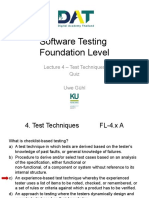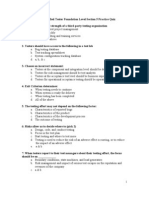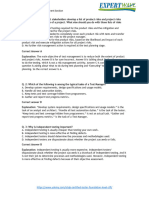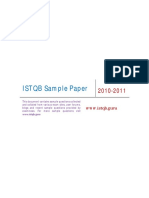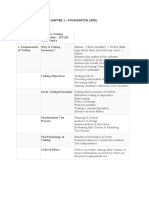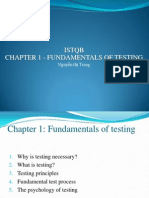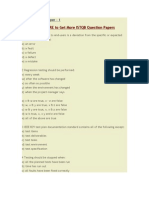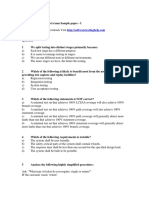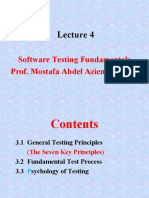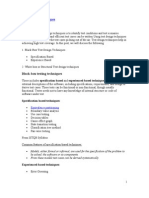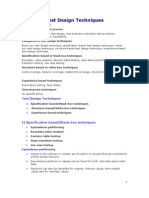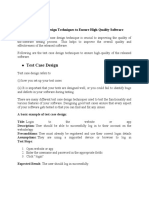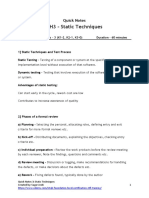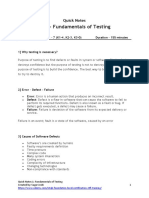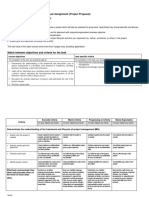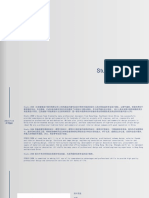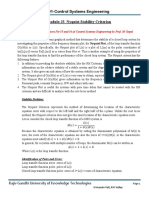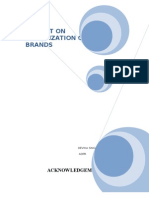0% found this document useful (0 votes)
110 views6 pagesTest Design Techniques Guide
[1] The document discusses various test design techniques including specification-based/black-box techniques like equivalence partitioning, boundary value analysis, decision table testing, state transition testing, and use case testing. It also discusses structure-based/white-box techniques like statement coverage, decision coverage, condition coverage, and multiple condition coverage. Finally, it discusses experience-based techniques like error guessing and exploratory testing.
[2] Choosing an appropriate test technique depends on factors like the models used in development, tester knowledge and experience, test objectives, documentation available, life cycle model used, risk assessment, customer requirements, system type, and time and budget.
Uploaded by
BlablaCopyright
© © All Rights Reserved
We take content rights seriously. If you suspect this is your content, claim it here.
Available Formats
Download as PDF, TXT or read online on Scribd
0% found this document useful (0 votes)
110 views6 pagesTest Design Techniques Guide
[1] The document discusses various test design techniques including specification-based/black-box techniques like equivalence partitioning, boundary value analysis, decision table testing, state transition testing, and use case testing. It also discusses structure-based/white-box techniques like statement coverage, decision coverage, condition coverage, and multiple condition coverage. Finally, it discusses experience-based techniques like error guessing and exploratory testing.
[2] Choosing an appropriate test technique depends on factors like the models used in development, tester knowledge and experience, test objectives, documentation available, life cycle model used, risk assessment, customer requirements, system type, and time and budget.
Uploaded by
BlablaCopyright
© © All Rights Reserved
We take content rights seriously. If you suspect this is your content, claim it here.
Available Formats
Download as PDF, TXT or read online on Scribd
/ 6

